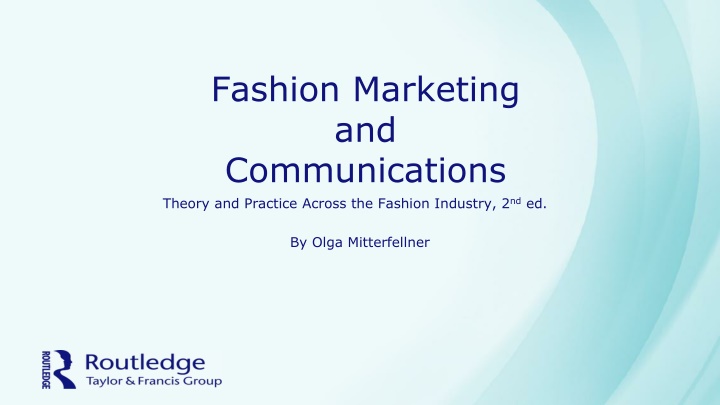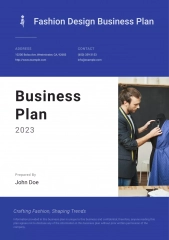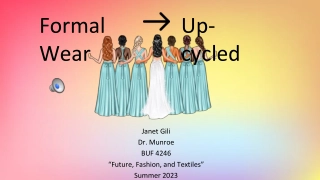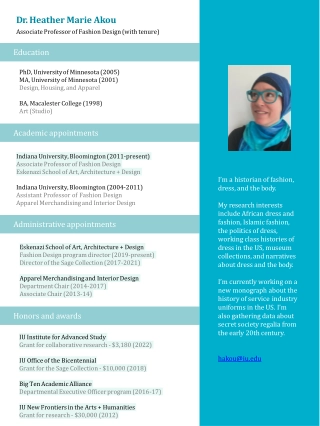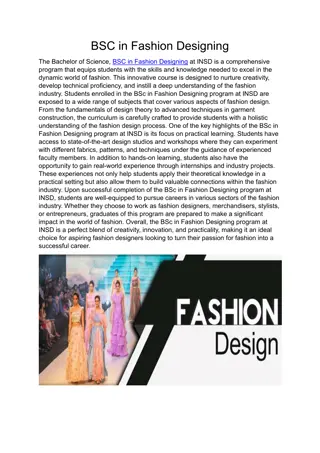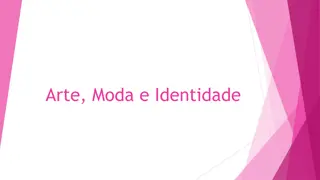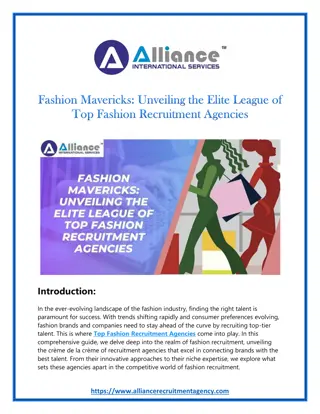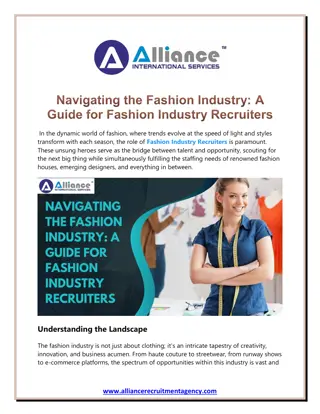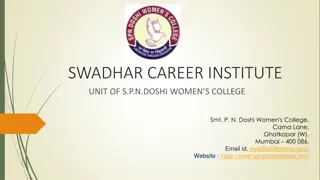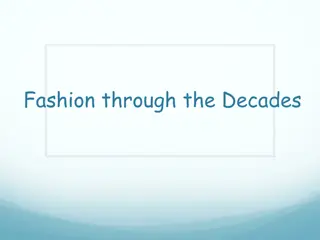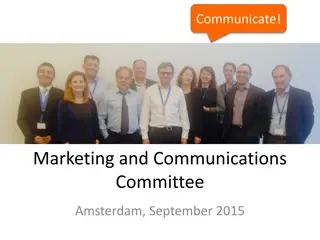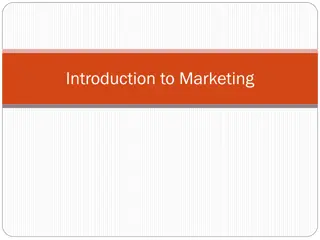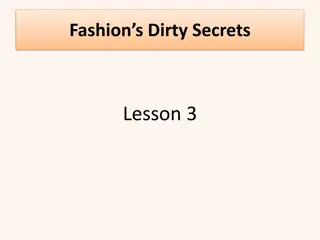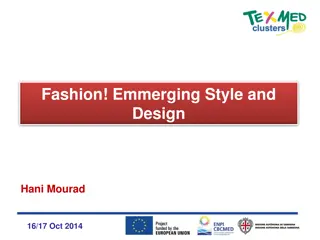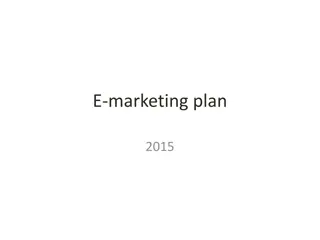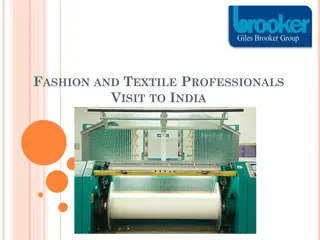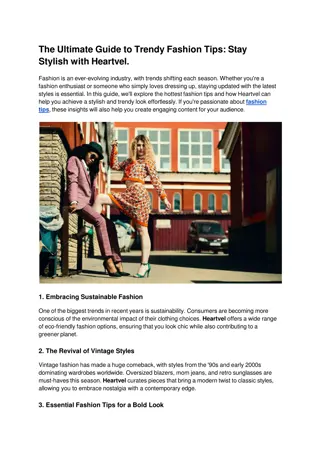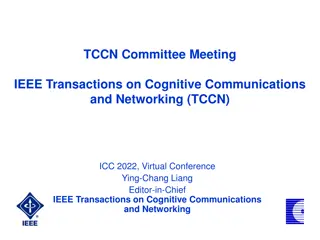Fashion Marketing and Communications
Delve into the evolution of marketing in the fashion industry with reflective questions for each chapter, exploring historical campaigns, ethics, and modern practices.
Download Presentation

Please find below an Image/Link to download the presentation.
The content on the website is provided AS IS for your information and personal use only. It may not be sold, licensed, or shared on other websites without obtaining consent from the author.If you encounter any issues during the download, it is possible that the publisher has removed the file from their server.
You are allowed to download the files provided on this website for personal or commercial use, subject to the condition that they are used lawfully. All files are the property of their respective owners.
The content on the website is provided AS IS for your information and personal use only. It may not be sold, licensed, or shared on other websites without obtaining consent from the author.
E N D
Presentation Transcript
Fashion Marketing and Communications Theory and Practice Across the Fashion Industry, 2nded. By Olga Mitterfellner
Questions for Chapter 1 1) How would you define marketing in your own words? 2) What role did the industrial revolution play for the production of (fashion) goods? 3) How did the industrial revolution lead to modern marketing practices (advertising, PR)? 4) Which types of media were used early in the 20thCentury to disseminate information? 5) Can you think of two successful fashion-related campaigns during the 1920s. 30s or 40s? What media channels were used? 6) How did N.W. Ayers change our relationship with romance, love and marriage permanently? 7) What ethical concerns have you noted whilst reading this chapter?
Questions for Chapter 2 1) How did Queen Elizabeth I use fashion and PR to her advantage? 2) What unethical campaign was Edward Bernays known for? How is it connected to fashion and ideology? 3) What are the core differences between advertising and PR? What do they have in common? 4) What sections make up a press release? Which is the most important section and what information should it contain? 5) What activities would a PR agency be responsible for and offer to a client? 6) How would you define Public Relations in your own words? 7) Which ethical concerns have you noted whilst reading the chapter?
Questions for Chapter 3 1) Can you name the inventor and the 4 elements of the original Marketing Mix? 2) What do the 3 supplemental Ps of People, Process and Physical Evidence entail? 3) How does the New Marketing Mix with the 4 Ds differ from the 4 Ps? Do you agree with it or disagree? 4) How was marketing misused in the case of Abercrombie & Fitch during the time of CEO Mike Jeffries? What was deemed unethical? 5) Which new marketing activities have been implemented under the leadership of CEO Fran Horowitz? Are they more ethical? 6) Can you explain what is meant by Integrated Marketing Communications plan? Which Ps of the Marketing Mix (or Ds of the New Marketing Mix) does it fall under? 7) Have you noted any ethical concerns while reading the chapter?
Questions for Chapter 4 1) What information would an agency receive in the client briefing and how does it differ from an internal briefing ? 2) Which types of media would you classify as ATL and BTL? What is the price range for each of them? 3) What was unusual about the campaign that was created for MINI by the FEL agency? 4) What is the role of a creative director at an advertising agency and how does this differ from a creative director of a fashion brand? 5) What is the future of print media with the rise of digital media? 6) What sort of data can you find in a rate card or media kit ? 7) Have you noted any ethical concerns while reading the chapter?
Questions for Chapter 5 1) How would you describe an opinion leader in your own words? 2) In which way can bloggers and celebrities collaborate with a fashion brand? 3) What makes celebrity endorsements effective? 4) How can brands and celebrities be matched well? 5) What is remarkable about Hally, also known as the Korean Wave? 6) Have you noted any ethical concerns while reading the chapter?
Questions for Chapter 6 1) 2) 3) 4) How did the internet evolve to become a staple for consumers worldwide? Which were the first fashion companies to start offering products online? What to the individual letters of the PEO framework stand for? What sort of brand touchpoints will a consumer encounter during their customer journey? Has your recent purchase been more of a linear or circular customer journey? What are KOLs and KOCs in China? Have you noted any ethical concerns while reading the chapter? 5) 6) 7)
Questions for Chapter 7 1) Why would you need to define a target market? 2) What is the difference between mass-marketing and target-marketing? 3) What is demographic and psychographic segmentation? 4) What is a primary, secondary and tertiary target market? 5) What types of market segmentation services are you aware of? 6) How did Tag Heuer try to reach a younger demographic? 7) Have you noted any ethical concerns while reading the chapter?
Questions for Chapter 8 1) What are Hofstede s Six Dimensions of National Culture? 2) What is the significance of Individualism versus Collectivism and do you know any countries that fit either description? 3) How can cultures differ when it comes to smells, taste and language? 4) In which way should the communication model of coding and decoding of messages be extended to improve international communication? 5) Explain the theory of Wind and Douglas (2001) and the two-step segmentation for international markets. 6) Is there more than one way to adapt a product and its message for an international market? 7) Which international markets can be lucrative and why? 8) Have you noted any ethical concerns while reading the chapter?
Questions for Chapter 9 1) Explain the term Sensory Branding in your own words. 2) How many bits per second do we pick up with our eyes? 3) What are Communication Buildings and how can they help brands create customer experiences? 4) Why was Flat Eric such a sensation in the 1990s and beyond? 5) How did Prada use music in their fashion film and what role did composer John Altman play? 6) What is sensory overload? 7) Have you noted any ethical concerns while reading the chapter?
Questions for Chapter 10 1) What sort of influence can advertising have on our relationship with ourselves? 2) Can you name some of the psychological implications of advertising on children or adults? 3) What is remarkable about Jean Kilbourne s work? 4) How is advertising generally regulated and by whom? 5) Which locations have banned advertising and why? 6) How is Benetton connected to the practice of shock advertising ? 7) In the USSR, how did people find out about fashion? 8) Have you noted any ethical concerns while reading the chapter?
Questions for Chapter 11 1) What did the Brundtland Report state and why is it significant to understanding sustainability? 2) True or false? Sustainability is mostly concerned with a healthy ecosystem. 3) What is the effect of production of goods according to the principles of the industrial revolution on the ecosystem? 4) What makes Freitag a remarkable brand? 5) How would you describe Geenwashing in your own words? Can you think of a recent example? 6) In which way does Auxiliary, Reformative and Transformative sustainability marketing differ from each other? 7) Pick one framework and explain in more detail: 3Rs, 9Rs, 3As, CSR, CFS (conceptual framework for sustainability), TBL, 3 Pillars and the SDGs. 8) What are the pros and cons of embedding the SDGs into a fashion business? 9) Have you noted any ethical concerns while reading the chapter?
Questions for Chapter 12 1) 2) In what way can the Fashion Carousel help to appraise a fashion business? Looking at the Economic Wave Theory, can you explain how long one Kondratiev Wave lasts and the four seasons it contains? Can you map the different major innovations to the 6 Kondratiev Waves? Which 5 adopter categories did Roger Everett propose in his Diffusion of Innovation Theory (DOI)? Which is the smallest percentage and how do these individuals perceive innovations? Looking at the Consumer Trend Canvas , how can trend research help with innovation? Which are some significant macro-trends that are shaping our future and the future of fashion marketing and communication? How would you describe Zeitgeist in your own words? Have you noted any ethical concerns while reading the chapter? 3) 4) 5) 6) 7) 8)
